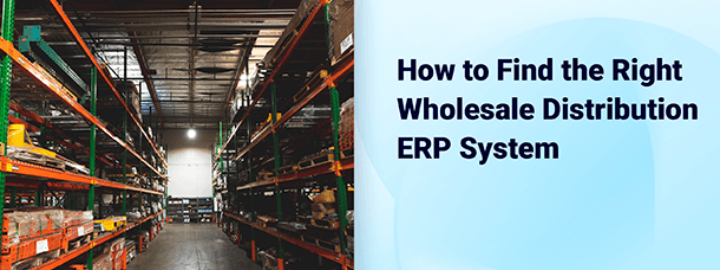
Today’s in-person and online consumers have high expectations. They want immediate gratification along with convenient and personalized shopping experiences, and if your business doesn’t meet their expectations, they’ll pivot—right to your competitor. To avoid losing customers, you need to effectively manage your inventory so that you’re never facing a stockout.
What is stockout in business? We’ll provide a stockout definition as well as explore what stockout rates are, why stockouts occur, and how you can avoid stockouts from happening.
Stockout Explained: Definition, Rate, and Cost
A stockout, or out-of-stock (OOS) situation, develops when a customer is prepared to buy a product, but it’s not available. Most customers respond in frustration, and that frustration can lead to the loss of revenue and reputation and an increase in operational expenses as you scramble to fix the situation (e.g., expedited shipping costs to get the product in, offering discounted delivery to customers if they’ll wait for the product to arrive, etc.).
Overstocks occur when you have too much inventory, which can result in additional costs or the need to discount products. Stockouts are just as problematic. Both are signs of poor inventory management. If you don’t manage inventory well, you won’t be able to meet customer demand, and your profits will suffer.
Calculating Stockout Rate
A stockout rate measures the percentage of time a customer is unable to purchase your product because it’s unavailable for sale. You can determine your overall stockout rate by using the following formula:
Number of Stockouts/Total Number of Sales Orders x 100 = Stockout Rate
Here’s an example. Let’s say you experience five stockouts out of 100 sales orders. Your stockout formula would be:
5/100 x 100 = 5% Stockout Rate
Calculating Stockout Costs
You can then determine the cost of these stockouts using the Cost-of-Stockout formula.
Days OOS x Average Units/Day x Unit Price = Cost of Stockout
This cost is a direct cost, while costs such as customer fallout and bad reviews are hidden costs that must also be considered.
Root Causes of Stockouts in Modern Supply Chains
You must understand what stockouts cost your business, but it’s just as important that you understand what causes them in the first place. There are plenty of reasons why you may suffer from stockouts, including:
- Demand volatility (e.g., need, item popularity, and seasonal spikes)
- Supplier delays
- Weather disruptions
- Geopolitical events
- Strikes
These stockout challenges are external disruptions outside of your control, but there are a few causes that you can. Examples include data errors (e.g., inaccurate counts), slow reconciliations, and siloed systems. The right business management solution, such as a cloud-based ERP with robust demand planning tools, helps you manage internal disruptions and prevent or reduce stockouts before they occur.
Demand Planning Tools Within an ERP Solution
Cloud ERP solutions provide businesses with a centralized repository for their critical business data that’s accessible via the Internet, providing users with anywhere and anytime access. Businesses manage their resources (e.g., materials, employees, capital, and more) through a single system, ensuring that every department and team member is connected and can collaborate using updated, synchronized information.
Many ERP solutions deliver retail, manufacturing, and distribution applications that provide demand planning tools for predicting future customer demand. With business analytical capabilities (including machine learning and AI), distribution requirements planning, and automated inventory processes, you can manage order quantities, set safety stock (extra inventory that acts as a safety net should demand surge or supply disruptions arise), optimize inventory turnover rates, avoid rush orders, supply reorder alerts, and more.
Additionally, most ERP solutions integrate seamlessly with third-party applications, including advanced demand planning applications. Together, these demand planning, inventory, and distribution tools help you limit—or, in many cases, eradicate stockouts.
Implementation Roadmap to Lower Stockout Rates
Implementing software that provide sophisticated demand planning tools to to securing customer satisfaction and success in today’s digital marketplace. To ensure the implementation goes well, consider the following steps:
- Determine which solution will work best for your unique needs by asking yourself what features and functions it should provide, considering whether they’re essential, desirable, not an immediate need, or nice to have. In the stockout scenario, demand planning features are crucial.
- Install the solution with the help of the software vendor.
- Migrate your data from your current systems to the new solution.
- Train your team on the new solution.
- Test and validate your solution (including checking to see if customizations are needed and that it’s working as expected).
- Go live.
Once you’re live on the new solution, you can immediately tap into the power of your demand planning tools to perfectly balance your supply and demand.
Evidence of Impact
Utilizing modern cloud-based ERP solutions with demand planning capabilities, like Acumatica, ensures that your days of guessing customer demand, manually checking inventory, and suffering from errors that cause costly stockouts are numbered.
Distributors and retail merchants can utilize Acumatica’s Inventory Management and Distribution Requirements Planning (DRP) software to optimize their inventory levels. At the same time, manufacturers can leverage Acumatica’s Material Requirements Planning tool as a stockout guardrail. By doing so, they’ll be able to improve inventory management by utilizing inventory availability, safety stock, reorder point levels, forecasts, and actual customer demand data to avoid shortages, all from a real-time dashboard.
Hedstrom Fitness, the sole licensor and distributor of BOSU exercise products, felt the game-changing impact their decision to implement Acumatica had on its inventory processes. In addition to automating their inventory counts, the Hedstrom Fitness team implemented cycle counting by codes to improve inventory accuracy and streamline the process of fulfilling multiple orders directly through EDI.
“Once I see everything looks good, I just hit process and two minutes later, I have 200 orders going to the warehouse and know that we have everything we need to fulfill those orders,” says Jillian Williams, Customer Service Manager. “Acumatica gives us a bird’s eye view on whether we can fulfill an order or not instantly, which means we can accommodate same-day shipping.”
President Seth McArdle adds: “We look at an out-of-stock scenario as a potential lost sale. So, by reducing lead times [within Acumatica], we have reduced our commercial customers out-of-stock time as well as provide a better customer experience.”
 Canada (English)
Canada (English)
 Colombia
Colombia
 Caribbean and Puerto Rico
Caribbean and Puerto Rico
 Ecuador
Ecuador
 India
India
 Indonesia
Indonesia
 Ireland
Ireland
 Malaysia
Malaysia
 Mexico
Mexico
 Panama
Panama
 Peru
Peru
 Philippines
Philippines
 Singapore
Singapore
 South Africa
South Africa
 Sri Lanka
Sri Lanka
 Thailand
Thailand
 United Kingdom
United Kingdom
 United States
United States











